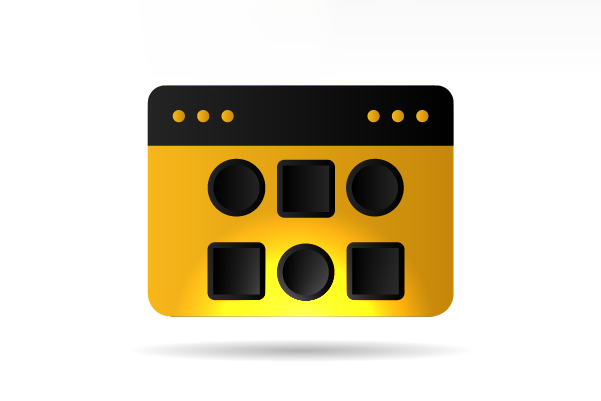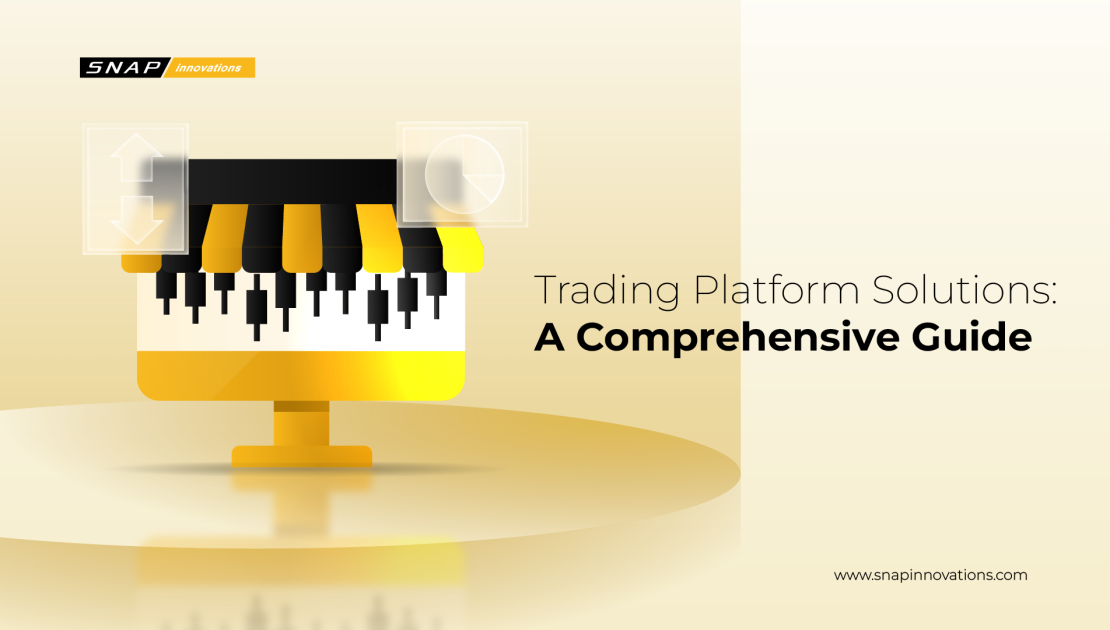Trading platforms are essential tools for anyone looking to engage in stock, commodities, or currency trading. They act as the bridge between traders and the financial markets, providing real-time access to market data, charting tools, and execution capabilities that allow users to buy and sell securities. The right trading platform can significantly enhance a trader’s ability to make informed decisions quickly and efficiently.
In this guide, we’ll explore the various aspects of trading platforms, from the different types available to the features that distinguish the best in the market. Whether you’re a beginner or an experienced trader, understanding the fundamentals of trading platforms will help you navigate the complexities of the financial world more effectively.
Types of Trading Platforms
 Trading platforms can be broadly categorized into three main types: web-based, desktop-based, and mobile platforms. Each type offers unique features and advantages tailored to different trading styles and preferences.
Trading platforms can be broadly categorized into three main types: web-based, desktop-based, and mobile platforms. Each type offers unique features and advantages tailored to different trading styles and preferences.
Web-Based Platforms
Web-based trading platforms are favored for their ease of access and user-friendly interfaces. These platforms do not require any downloads or installations, making them a preferred choice for beginners or traders who value convenience. Users can access their trading accounts and execute trades directly from any computer with an internet connection. Web-based platforms are typically less customizable than desktop versions but are continuously evolving to offer more features and tools that cater to a broader range of trading needs.
Read More: 7 best algo trading strategy in 2024
Additionally, these platforms often integrate seamlessly with various banking and financial services, providing a holistic trading environment. They usually come with integrated security measures such as data encryption and two-factor authentication to ensure the safety of trading transactions and personal information.
Desktop-Based Platforms
Desktop-based trading platforms are known for their comprehensive features and superior processing power. These platforms require a software download and installation on a trader’s computer, offering robust tools and advanced functionalities that are essential for frequent traders or those dealing with large volumes of trades. The ability to support complex trading strategies and extensive data analysis is a significant advantage of desktop platforms.
Moreover, these platforms often allow for a higher degree of customization in terms of trading environment setup, indicators, and automated trading scripts. The added stability and reliability, coupled with professional-grade tools, make desktop platforms a staple for serious traders who need precision and control in their trading operations.
Mobile Platforms
Mobile trading platforms cater to traders who need flexibility and the ability to trade from anywhere at any time. These platforms are designed for smartphones and tablets, providing essential trading functions in a compact form. While traditionally limited in features compared to web and desktop platforms, mobile platforms have seen significant advancements, with many now offering features like full order management, basic charting, and alert systems.
The development of mobile platforms focuses on optimizing user experience on smaller screens and improving the responsiveness of applications to match the fast-paced nature of trading. This accessibility has made mobile platforms increasingly popular among a new generation of traders who prioritize mobility and time efficiency.
Key Features of Effective Trading Platforms
Effective trading platforms are characterized by a combination of robust features designed to enhance user experience, facilitate seamless transactions, and ensure security and reliability. From intuitive user interfaces and comprehensive analytical tools to advanced order types and real-time data feeds, these platforms empower traders to make informed decisions quickly and efficiently. Understanding the key features of effective trading platforms is essential for investors looking to navigate the complexities of modern trading and optimize their strategies for maximum profitability.
Usability and Interface
An intuitive user interface is crucial in a trading platform. It ensures that both novice and experienced traders can navigate and utilize the platform’s features without a steep learning curve. Good platforms offer a balance between sophisticated functionality and simplicity, allowing users to easily monitor markets, access tools, and execute trades. Customization features such as drag-and-drop layouts, color schemes, and the ability to select which metrics are displayed can significantly enhance the trading experience by making the platform feel personally tailored to the user’s needs.
Additionally, a well-designed user interface improves the efficiency of trading activities by reducing errors and misunderstandings, which are often costly in the trading world. Platforms that also incorporate educational resources and tooltips can further aid traders by providing quick guidance as they navigate through their trading decisions.
Security
Security is a top priority for any trading platform, as traders must be assured that their funds and personal information are protected against cyber threats. Effective platforms use state-of-the-art encryption technologies to safeguard user data both in transit and at rest. Security features like biometric access controls, two-factor authentication, and routine security audits are becoming standard practices.
Furthermore, it’s essential for platforms to comply with financial industry regulations and standards to provide an additional layer of trust and security. Regular updates and patches to address newly discovered vulnerabilities are crucial to maintaining the integrity and security of the platform, ensuring that traders can focus on their trading activities without concerns about potential security breaches.
Technical Tools and Analytics
For traders who rely on technical analysis to make informed decisions, the availability of advanced charting tools and a variety of technical indicators is essential. Effective trading platforms provide these tools with real-time data, enabling traders to analyze market trends, spot trading opportunities, and apply various analytical techniques directly within the platform. Features like customizable charts, a range of pre-built and custom indicators, and graphical tools for drawing trend lines and patterns are indispensable.
In addition to technical tools, high-level platforms offer robust analytical capabilities such as backtesting, which allows traders to test their trading strategies against historical data before risking real money. This integration of tools and analytics helps traders refine their strategies and increase their chances of successful outcomes in the markets.
Speed and Reliability
The ability to execute trades quickly and reliably is fundamental in a trading platform, especially in fast-moving markets where price fluctuations happen in milliseconds. A platform’s infrastructure should be designed to handle high volumes of trades efficiently and without delay. This includes having reliable servers and a robust network architecture to ensure that trade orders are processed without slippages or unnecessary delays.
Reliability also encompasses platform uptime. Traders need platforms that operate smoothly without frequent downtimes, which can lead to missed trading opportunities. Ensuring that the platform has fail-safes and redundancy plans in place can help mitigate these risks, providing traders with a consistent and dependable trading environment.
Integration and Support
Effective trading platforms are integrated with a wide range of trading tools and external resources, including economic calendars, news feeds, and direct access to market research. This integration helps traders access all the necessary information and tools in one place, making it easier to make informed decisions quickly. Support for automated trading systems, such as bots and trading algorithms, is also a significant advantage for those looking to implement sophisticated trading strategies.
Customer support is another critical aspect of a trading platform. Excellent customer service ensures that any technical issues or queries traders may have can be addressed promptly. This support should be accessible via multiple channels like phone, email, and live chat, and available 24/7 to align with the global nature of trading.
Mobile Access and Compatibility
As trading moves increasingly towards mobile devices, the best trading platforms ensure their mobile versions are as functional as their desktop counterparts. This includes not just basic trading and account management but also access to detailed charts, trading tools, and alerts. The mobile platform should offer a seamless, responsive design that adjusts to different screen sizes and orientations, providing a consistent experience across devices.
Moreover, mobile trading apps should include features such as touch-enabled trade management, notifications for market events, and security measures tailored for mobile use, such as biometric logins. This ensures that traders can securely and effectively manage their investments and respond to market changes promptly, no matter where they are.
Choosing the Right Trading Platforms
 Selecting the right trading platform is critical as it can significantly influence your trading success. The decision should be based on several factors that align with your specific trading needs, preferences, and goals. Here’s a detailed look at some of the key considerations:
Selecting the right trading platform is critical as it can significantly influence your trading success. The decision should be based on several factors that align with your specific trading needs, preferences, and goals. Here’s a detailed look at some of the key considerations:
Understanding Your Trading Style and Needs
The first step in choosing a trading platform is to understand your trading style. Are you a day trader, a swing trader, or a long-term investor? Each style has different requirements in terms of speed, tools, and data accessibility. Day traders, for example, require platforms that can perform very fast executions and have robust charting and real-time data capabilities. Long-term investors might prioritize platforms with extensive research resources and more sophisticated portfolio analysis tools.
Evaluating Cost vs. Features
Most trading platforms come with a range of pricing models, including commission-based, spread-based, or a combination of both. Some offer subscription models with varying tiers of service. It’s important to compare these costs against the features each platform provides. While cost-effective solutions are attractive, ensure they do not compromise on essential functionalities needed for effective trading.
Trial and Usability
Many platforms offer trial periods or demo accounts, allowing you to test their interface and features without financial commitment. Utilizing these trials is highly recommended as it helps you assess the platform’s usability and whether it suits your trading needs. Pay particular attention to how intuitive the platform is, how easy it is to place orders, and how well it performs during high-volatility periods.
Security and Regulatory Compliance
Lastly, a crucial factor in choosing a trading platform is its security measures and compliance with regulatory standards. Trusted platforms will be registered with and regulated by financial authorities, ensuring they adhere to specific standards of operation and have measures in place to protect user assets and data.
5 Top Trading Platforms on the Market
When it comes to selecting a trading platform, having a list of top contenders can be helpful. Below, we explore some of the most popular and highly regarded trading platforms currently available. Each platform is known for its unique features, reliability, and user satisfaction.
1. MetaTrader 4 (MT4)
Widely recognized as the standard for forex trading, MetaTrader 4 offers robust technology and advanced charting capabilities that cater primarily to forex traders but is also effective for trading other asset classes. MT4 is renowned for its analytical tools, automated trading capabilities (through Expert Advisors), and customization options. Its user interface, while not the most modern, is highly functional and supports a vast array of trading strategies.
2. Thinkorswim by TD Ameritrade
Thinkorswim is a favorite among advanced traders, particularly in the United States, due to its comprehensive suite of trading tools, including state-of-the-art charting, a plethora of technical indicators, and powerful options trading capabilities. This platform provides professional-grade technology, live data streaming, a customizable interface, and access to a wide range of markets including stocks, options, futures, and forex.
3. eToro
Known for its social trading features, eToro allows traders to copy the trades of experienced peers, which is particularly appealing to beginners and those looking to leverage the expertise of successful traders. Besides its innovative social element, eToro also offers a straightforward user interface, making it accessible and easy to use for traders at all levels. It supports a variety of asset classes including stocks, cryptocurrencies, ETFs, and commodities.
4. Interactive Brokers (IBKR)
Interactive Brokers is favored by professional traders for its advanced capabilities and the extensive range of assets it offers, from stocks and options to futures and forex across multiple global markets. IBKR is known for its low-cost pricing structure, powerful trading tools, and high-speed order execution. It also provides access to comprehensive research materials and risk analysis tools that help traders make informed decisions.
5. Robinhood
Popular among a younger demographic, Robinhood has made a name for itself with its commission-free trading model. This platform is particularly suited to novice traders due to its simple, easy-to-use interface and mobile-first approach. While it offers fewer trading tools and features than some of its more sophisticated competitors, it remains a solid choice for those new to investing, providing access to stocks, options, and cryptocurrency trading.
Future Trends in Trading Platform Technology
As technology advances, trading platforms are rapidly evolving to incorporate new innovations that enhance user experiences and improve functionality. The integration of Artificial Intelligence (AI) and Machine Learning (ML) is becoming increasingly prevalent, offering sophisticated analytical tools and predictive capabilities that automate routine decisions and personalize trading strategies.
Concurrently, there is a significant push towards enhancing mobile trading platforms, driven by advancements in mobile technology like 5G, which promise more powerful, reliable, and feature-rich mobile trading experiences. Blockchain technology is another transformative trend, poised to increase the security and transparency of trading platforms through decentralization, potentially reducing costs and eliminating intermediaries.
Read More: 10 best stock algorithms software in 2024
Additionally, as financial markets face stricter regulatory scrutiny, trading platforms are integrating advanced compliance tools to automate and streamline regulatory processes, helping both traders and platform operators adhere to legal standards more efficiently. Moreover, trading platforms are expanding their asset offerings, including emerging classes like cryptocurrencies and ESG-focused investments, catering to diversifying investor interests and societal shifts.
Lastly, the focus on improving user experience through personalized interfaces and customized trading insights continues to be a priority, aiming to make trading as intuitive and engaging as possible for a broader audience. These trends collectively forecast a dynamic future for trading platforms, centered around innovation, enhanced performance, and user satisfaction.
Conclusion
In this comprehensive guide, we’ve explored the essential facets of trading platform solutions, from the different types available to the key features that distinguish the best in the market. As we’ve seen, whether for seasoned traders or those just starting out, the choice of a trading platform can significantly impact the effectiveness and efficiency of one’s trading activities. The importance of selecting a platform that not only suits one’s trading style but also offers robust security, advanced analytical tools, and reliable performance cannot be overstated.
Looking ahead, the future of trading platforms is bright with promising advancements in technology such as AI, enhanced mobile capabilities, and the integration of blockchain, all of which aim to provide greater efficiency, security, and user satisfaction. As the digital landscape evolves, so too will the tools we use to interact with the financial markets, making trading more accessible, secure, and profitable for everyone.



